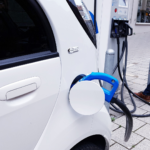Electrification of mobility, particularly electric vehicles (EVs), has just begun in Afghanistan and they face their own unique challenges and opportunities there based on the country’s infrastructure and energy landscape as well as economic situation. Here’s an overview:
Current Scenario : Electric Vehicles in Afghanistan
Adoption Rate:
There is very little EV penetration in Afghanistan. There is limited availability of hybrid and electric vehicles, most of which are imported and expensive, while infrastructure is limited.
Infrastructure Gaps: Electric Vehicles in Afghanistan
The availability of EV charging stations and an untrustworthy electrical grid make operation of EVs nearly impossible. This worsens in the face of frequent power blackouts.
Economic Constraints:
Afghanistan’s economy is largely dependent on imports, and EVs are pricey. This, along with the low levels of average income, makes them less reachable to the majority of the population.
Potential Benefits : Electric Vehicles in Afghanistan
Environmental Improvement:
Cities like Kabul face major air pollution problems, partly due to older, high-emission vehicles being used widely. They are an eco-friendly alternative as EVs have zero tailpipe emissions.
Fuel Independence:
Afghanistan has to import fuel, making it expensive and vulnerable to fluctuations in supply. This dependence could be reduced by EVs — particularly when done in tandem with renewable energy sources.

Electric Vehicles in Afghanistan
Challenges : Electric Vehicles in Afghanistan
Electricity Supply:
Most of Afghanistan experiences chronic power outages. It is Difficult to Reliably Charge EVs without Stable Electricity Supply. So, it is difficult to sustain Electric Vehicles in Afghanistan.
Lack of Charging Stations:
It requires special tools and skills to maintain EVs. The country lacks trained technicians and service centers.
Cost of Importing EVs: Electric Vehicles in Afghanistan
Afghan consumers face the dual hurdles of import taxes and transportation costs that make EVs expensive.
Opportunities:
Afghanistan has a vast potential of solar as well as wind energy. The solution to both challenges—electricity and charging infrastructure—could be developed solar-powered EV charging stations.
International Support:
They could use international assistance or joint ventures that center on renewable energy and sustainable transport.
Affordable EV Models: Electric Vehicles in Afghanistan
Low-cost models of electric vehicles (EVs) could enter the Afghanistan market, particularly in the cities. It is easy to import electrical vehicles in Afghanistan.
The Role of Hybrid Vehicles:
It might make more sense to promote hybrid cars first. They’re taking advantage of the fact that fuel and electricity are different beasts, which diminishes a dependence on charging infrastructure.
The Path Forward : Electric Vehicles in Afghanistan
In order for Afghanistan to embrace EVs on a large scale:
Investment in electrical vehicles in Afghanistan’s infrastructure Necessary charging stations, especially solar charging stations
Government Policies: The government can provide incentives, such as tax cuts for EV imports and for new renewable energy projects, to promote adoption.
Throughout this paper, we will discuss some of the hurdles in EV adoption, which are not limited to: a) Educating the population on the economic and environmental benefits of EVs; b) Infrastructure on charging stations; c) Legislation; d) Availability of EVs.
Global Cooperation: Working with initiatives that promote green energy
Conclusion: Electric Vehicles in Afghanistan
Overall, by taking a phased approach to EV adoption, prioritising hybrid vehicles, renewable energy infrastructure and international support, a sustainable future will be possible — albeit not necessarily a full-scale one. Do you want to know more about any particular part?



Pingback: Driving License in Afghanistan: A Comprehensive Guide - Tech Master Online